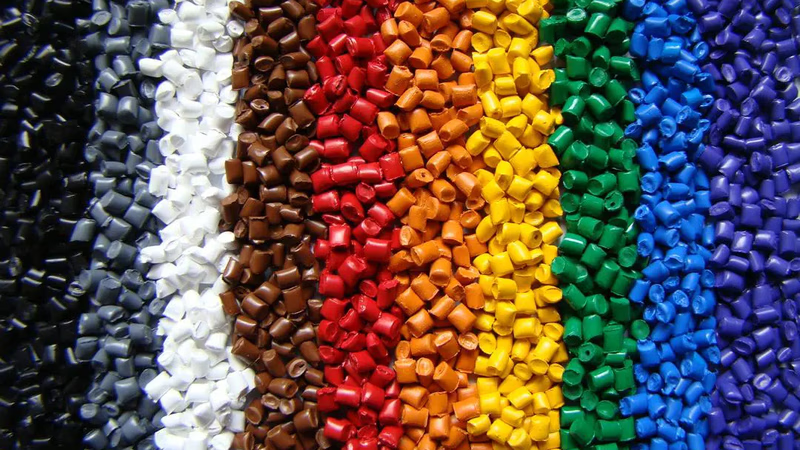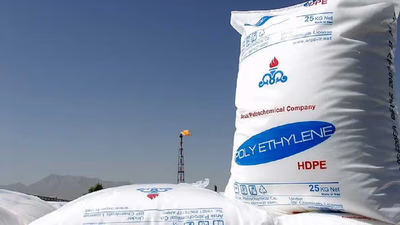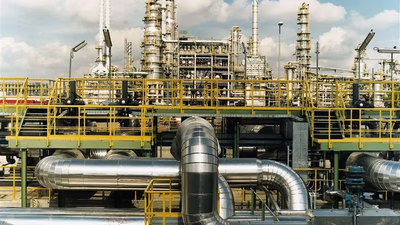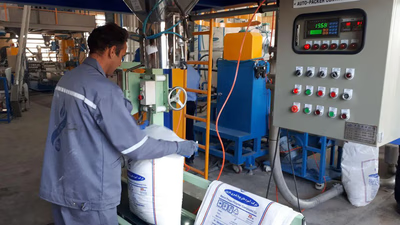
West Asia"s petrochemical products drive regional trade growth."
Petrochemical products in this region are produced from hydrocarbons derived from crude oil and natural gas, which are abundant resources in many countries within West Asia. These products play a crucial role in various sectors, including manufacturing, construction, agriculture, automotive, textiles, and more. The West Asian petrochemical industry encompasses the production of a wide range of products, including basic petrochemicals, intermediate chemicals, and plastic resins. The West Asian petrochemical industry benefits from the region's abundant oil and gas reserves, which serve as feedstocks for these products. Countries such as Saudi Arabia, Iran, Qatar, the United Arab Emirates, and Kuwait are major players in the production and export of petrochemicals in the region.
- Ethylene is a basic building block in the petrochemical industry and is primarily used to produce polyethylene, which is the most widely used plastic worldwide. Polyethylene is used in various applications such as packaging, containers, pipes, and films.
- Propylene is another important basic petrochemical produced in West Asia. It is primarily used to manufacture polypropylene, which finds applications in automotive parts, packaging materials, textiles, and other consumer goods.
- Methanol is a versatile chemical used as a solvent, antifreeze, and as a raw material for the production of formaldehyde, acetic acid, and various other chemicals. It also serves as a fuel in certain industries.
- Aromatics, such as benzene, toluene, and xylene, are important feedstocks for the production of numerous chemicals and plastics. They are used in the manufacturing of products like polyester fibers, plastics, synthetic rubber, dyes, and pharmaceuticals.
- PET is a type of polyester commonly used in the production of bottles, containers, and packaging materials due to its excellent strength, transparency, and recyclability.
- Polypropylene is a thermoplastic polymer with various applications in the automotive industry, consumer goods, packaging, and textiles. It is valued for its lightweight, durability, and chemical resistance.
- Ammonia and urea are essential products in the fertilizer industry. Ammonia is used as a raw material for the production of urea, a nitrogen-based fertilizer widely used in agriculture.
- Polystyrene is a versatile plastic used in packaging, insulation materials, disposable cutlery, and consumer electronics.
Middle East is one of the largest fuel resources in the world; a source that even seems somewhat absurd. Of course, this is an exaggeration, and any source of fossil fuels will eventually run out, but how we use this fuel is the most important principle possible. The petrochemical industry in West Asia has a significant impact on the region's economies, contributing to job creation, foreign exchange earnings, and industrial development. It has also helped diversify the economies of many West Asian countries by providing a value-added sector alongside oil and gas extraction.
The Middle East is one of the most important hubs in the petrochemicals industry and the production of our petrochemical products is increasing. This is good news because polymer, plastic, and petrochemical products will have two primary uses; the first is to boost domestic production, and the second export. You may not believe it, but the era of crude oil exports is over. From one place to another, you just need to know how to use this crude oil.
-

Petrochemical products are essential raw materials across various industries, including automotive, construction, packaging, textiles, and agriculture. They drive economic growth by creating jobs and contributing to GDP through exports. Key petrochemicals like ethylene and propylene serve as building blocks for numerous products, including plastics, fertilizers, and chemicals. Ethylene is the most produced plastic globally, while propylene is crucial for manufacturing versatile plastics and chemicals. The petrochemical industry also plays a vital role in agriculture by providing fertilizers that enhance crop yields. Petrochemical products can be categorized into basic, intermediate, and final products, each serving specific industrial needs. The versatility of petrochemicals allows for innovation in product development, improving performance and functionality across applications. Additionally, these products contribute to energy efficiency, with lightweight materials reducing fuel consumption in vehicles and enhancing insulation in buildings. Overall, petrochemicals are integral to modern life, enhancing safety, convenience, and sustainability.
-

The West Asian petrochemical industry is a vital sector, leveraging abundant hydrocarbons from crude oil and natural gas. Major countries like Saudi Arabia, Iran, Qatar, the UAE, and Kuwait are key players in the production and export of a diverse range of petrochemical products. These include essential materials such as ethylene, propylene, methanol, and various plastics like polyethylene and polypropylene. Ethylene serves as a primary building block for polyethylene, widely used in packaging and construction, while propylene is crucial for producing polypropylene, utilized in automotive and consumer goods. The industry also produces ammonia and urea, essential for fertilizers, and various aromatic compounds used in pharmaceuticals and synthetic materials. The economic impact of the petrochemical sector is significant, contributing to job creation, foreign exchange earnings, and industrial diversification in the region. As the Middle East transitions from crude oil exports to value-added petrochemical products, the focus shifts towards enhancing domestic production and expanding export capabilities. This shift reflects a broader trend in the global market, where the demand for polymer and plastic products continues to rise, positioning West Asia as a critical hub in the global petrochemical landscape.
-

West Asia, rich in crude oil reserves, is a leading producer with countries like Saudi Arabia, Iraq, Iran, Kuwait, and the UAE operating advanced refineries. These facilities utilize cutting-edge technologies to enhance efficiency and product yield. The refining process begins with distillation, separating crude oil into lighter and heavier fractions. Subsequent conversion processes, such as catalytic cracking and hydrocracking, transform heavier fractions into valuable products like gasoline, diesel, and jet fuel. The refining output is categorized into six main groups, including naphtha, ethane, kerosene, propane, and butane, each yielding diverse products essential for various industries. Notably, chemical fertilizers and plastic raw materials are significant outputs, supporting agriculture and manufacturing. The integration of refineries with petrochemical complexes further amplifies the value derived from crude oil, producing key feedstocks like ethylene and propylene for the petrochemical sector. This interconnectedness between refining and petrochemicals is vital for economic growth in the region, meeting energy and material demands across multiple sectors.
-

Petrochemical polymers and plastics are essential materials across diverse industries due to their versatility, durability, and cost-effectiveness. They can be molded into various shapes and sizes, making them suitable for applications in packaging, construction, automotive, electronics, healthcare, and consumer goods. Plastics like polyethylene and polypropylene are widely used for their chemical resistance and longevity. The ability to withstand harsh conditions and provide safety in applications such as food packaging and medical devices highlights their importance. The production of plastics is categorized into thermoplastics, thermostats, and elastomers, each with unique properties. PVC, polystyrene, PET, and polyurethane are notable examples, each serving specific functions in construction, insulation, and consumer products. The petrochemical industry focuses on producing granules, which are essential for manufacturing various plastic products. While domestic production has increased, there remains a reliance on imports for certain materials.
However, advancements in local manufacturing capabilities are reducing dependency on foreign products. The lightweight nature of plastics also contributes to improved fuel efficiency in vehicles and lower transportation costs, making them a preferred choice in many applications. Overall, the ongoing innovation and development in petrochemical polymers and plastics are crucial for meeting market demands and enhancing product functionality.




